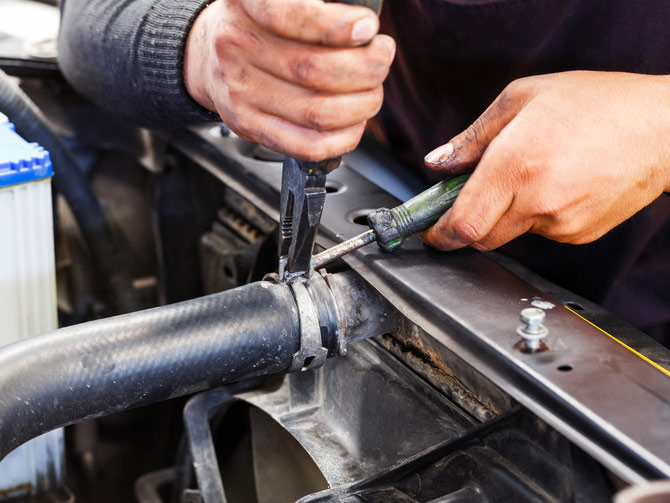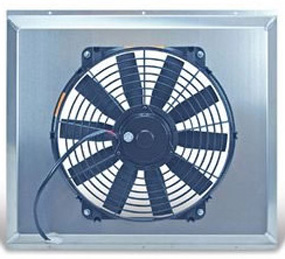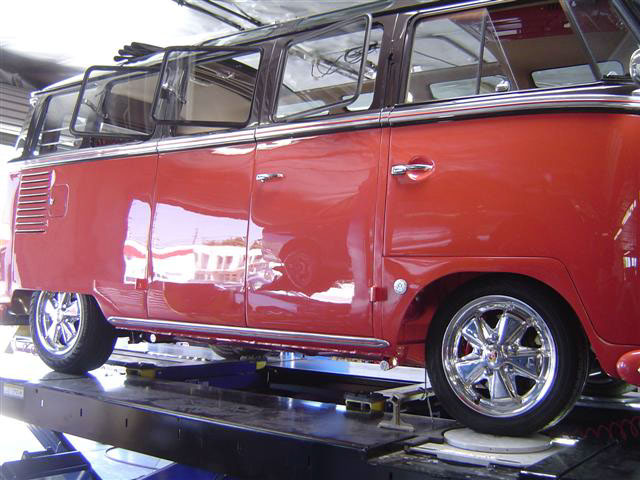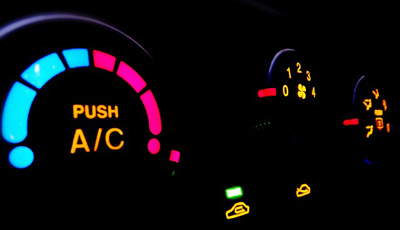
Cooling System Maintenance Prevents Summer Overheating
The Value of Cooling System Maintenance
Summer is here and even while in California we have moderate temperature variations in all four seasons; summers can get quite hot and this can affect your car if you’re not prepared. Even if your car has low mileage it’s the time factor of heat, wear and tear taking a toll on the rubber components. AAA recommends hoses being replaced every 5 years and to check them periodically.
Important hoses are made out of rubber and in a harsh environment under the hood, in summer temperatures of over 90 degrees, the temperature under your hood can reach 200-250 degrees. Another important fact to realize is that a lot of dealers aren’t stocking many hoses so if you relied solely on a dealer it could turn into a 2 or 3 day repair. That’s not acceptable and when you trust your car to All Car, that won’t happen.
Keeping your car cool – preventing overheating includes important items as:
– Hose checks
– Serpentine belt checks
– Radiator for leaks
– Electric fan for wiring and temperature kick in
– Water pump for leaks
– Coolant system check for clean fluid and mixture
– Thermostat check to ensure temperature valve is working properly
– Transmission Coolant Line Inspection – most Important for the transmission
Understanding Your Cooling System
The Importance of keeping it ‘Cool’
The car’s radiator is the main component for your cooling system.
Automobile radiators are constructed of a pair of header tanks, linked by a core with many narrow passageways. This core is usually made of stacked layers of metal sheet, pressed to form channels and soldered or brazed together. For many earlier years radiators were made from brass or copper cores soldered to brass headers. Modern radiators save money and weight by using plastic headers and may use aluminum cores.
However, this construction is less easily repaired than traditional materials so it’s important to do regular maintenance checks to prevent needless replacement. It is also very important to keep your coolant at its preferred formula of coolant to water. Distilled water is preferred to keep it from formulating unwanted chemical build ups inside the radiator over time.

Your electric fan has a temperature setting that kicks on the Fan when a certain temperature is reached. The electric fan and the thermostat are two temperature controlled units. Both have a temperature control setting on them designed to come on at various temperatures.
Cooling systems remove heat from the engine using the properties of heat transfer. Modern cars use liquid cooling systems. A fluid of a combination of coolant and water is circulated within the engine, that is then pumped out of the engine into a radiator, where the heat is released. A rather often but overlooked aspect of the importance of keeping your cooling system running good is the cooling affect it has on your transmission.
Automatic transmissions need to run cool and one way they do this is by the way of a coolant line running from the transmission to the radiator. A cool running engine means a cooler running transmission and that means better shifting performance and longer mileage.
In a liquid cooled engine, the liquid coolant optimally should contain a mixture of distilled water and antifreeze, of which the base ingredient is methyl alcohol. The fluid is pumped through channels that are manufactured into the engine block. The fluid draws heat out of the engine and flows into the radiator to be cooled.
The radiator is a set of pipes with thousands of thin metal fins mounted them. The fins conduct the heat out of the liquid which is cooled enough to be cycled back into the engine to repeat the process. The radiator has a fan that blows outside air against the fins. This increases the amount of air that flows over the cooling fins of the radiator and allow for more heat to be removed from the liquid coolant.
Since combustion engines operate better at a higher temperature, ‘but, not too high’, a device called a ‘thermostat’ is designed into the cooling system to help them warm up more quickly. A thermostat is a small valve in the cooling system which is closed when the engine is cold. This blocks the coolant from flowing into the radiator and running out the overflow tube and allows it to heat up at a quicker pace. As the coolant reaches the desired temperature, wax inside the thermostat melts and pressurizes which forces the valve open. The coolant is now able to flow into the radiator ensuring that the engine temperature stays constant and does not overheat.
There are various options with thermostats that can be switched around usually ranging from 165 degrees up to 225 degrees depending on your make and model. If you drive your car in more heated areas during summer months give us a call and ask us if it would be a good idea to install a lower thermostat for you. This is a nominal cost.
Your auto’s cooling system is probably the single most important part of your engine. When components heat up too much for too long they can fail or brake. It’s like exercising in the middle of Death Valley in the summer, if you don’t keep cool and fluids topped off, you’re in serious trouble!



